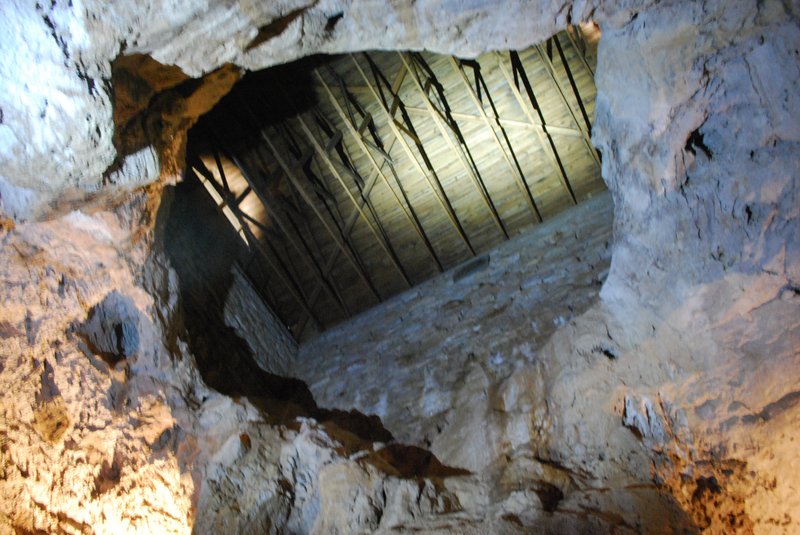During karstification, limestone is dissolved by organic acids that form within soil by the interaction of rainwater and soil; this infiltrates downwards within fissures in the limestone to form clints and grykes, sinkholes and caves. Further dissolution takes place within the caves by the flow of groundwater, creating so-called phreatic caves at the top of the water table. As all of these features become buried by other sediments, they become unstable and may eventually collapse.

Sinkhole, ~5 metres wide, viewed from underground, within a cave in Texas
Carbonate sedimentary rocks are often interlayered with evaporite minerals such as salt and gypsum. These minerals also form in shallow marine basins, under arid conditions that lead to evaporation of the seawater. During the Permian and Triassic, for example, a sustained hot, dry climate led to deposition of large volumes of salt in the Zechstein Basin, in the vicinity of the present day southern North Sea, and Cheshire Basins of northern Europe. Evaporites, particularly halite (common salt) dissolve easily in freshwater and therefore when these intervals are exposed to modern rainfall they may be removed. This destabilises the overlying rock and can result in collapse.
Both karstification and evaporite dissolution can lead to bedrock instability, creating an engineering hazard. Buildings and roads might become unstable and there is the potential for structural collapse. Sink holes have received a significant amount of attention in previous years as they can open up suddenly, for example after a long period of rainfall, forming metre-scale caverns at the surface that are a hazard to humans and can be highly destructive to residential and commercial properties. Detailed mapping, shallow geophysical investigation and monitoring of landscapes underlain by these sediments is therefore essential to prevent human and economic loss.